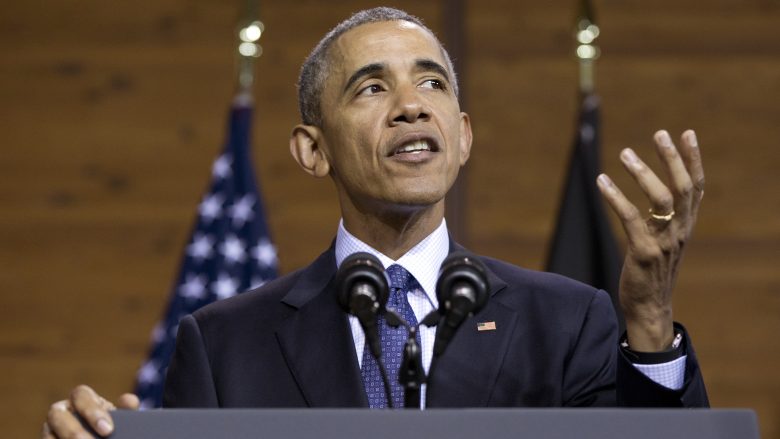U.S. regulations cost American families $15K per year
By Daniel Huizinga | May 16, 2016, 10:18 EDT
 President Barack Obama speaks in Hannover, Germany, Monday. (AP Photo/Carolyn Kaster)
President Barack Obama speaks in Hannover, Germany, Monday. (AP Photo/Carolyn Kaster) We often think of government regulations as important and valuable, keeping us safe and protecting us from fraud. But did you know the cost of these regulations could be up to $15,000 per family?
That’s one finding of a new report by the Competitive Enterprise Institute (CEI). Authored by Wayne Crews, CEI’s vice president for policy, “Ten Thousand Commandments” highlights the recklessness with which the federal government has been implementing new rules, often with substantial costs and minor benefits.
Because federal agencies can issue regulations and the president can enact certain rules by executive order, the rules are seldom debated by the public or discussed by the media. One of the biggest problems with federal regulations is that most of them are never analyzed to determine whether they are worth the costs they impose. As a result, there is no real accountability, especially for old regulations that remain in the Federal Register year after year.
“Among the problems with cost-benefit analysis is that it relies primarily on agency self-reporting,” Crews writes. “Having agencies audit their own rules is like asking students to grade their own exams.”
Regulatory costs have skyrocketed, the report notes, leading to an annual federal regulation and intervention cost of almost $2 trillion. If U.S. regulations were a country, they’d be the ninth-largest economy in the world, ahead of Russia.
To put that number in perspective, the cost of regulation and federal intervention comes out to $14,842 per household. Obviously, this amount is not actually paid by individual households, but it illuminates the significant drag on economic growth that regulations can have.
But it’s not just the cost that matters. The precedent set by an unaccountable set of federal agencies constantly issuing opaque rules without input from the public or Congress is dangerous. “We live in an era in which the government — without actually passing a law — increasingly dictates parameters of various economic sectors, including health care, retirement, education, energy production, finance, land and resource management, funding of science and research, and manufacturing,” Crews writes.
In 2015, Congress enacted 114 laws, while federal agencies issued 3,410 new rules, according to the report. That’s 30 rules for each new law.
Just recently, House Republicans won a court case arguing that the Obama administration spent money to fund part of the Affordable Care Act without a congressional appropriation. The line between legislators and federal agency officials has become fuzzier by the year, and many agencies seem to follow the old saying, “it’s better to ask forgiveness than permission.”
The CEI report also references a 2012 Washington Post article in which agency officials alleged the Obama administration had intentionally delayed issuing certain rules so to avert public controversy during an election year. This new style of rulemaking is bad for businesses and citizens, since they end up paying the costs of rules imposed on them by unelected bureaucrats.
“Regulations impact not just employment. We’ve seen an inverse correlation between regulation and innovation as well,” Crews told Opportunity Lives. “The only way to improve the future prospects for American businesses is to rein in federal regulations.”
Daniel Huizinga is a columnist for Opportunity Lives covering business and politics. Follow him on Twitter @HuizingaDaniel.
This article first appeared on Opportunity Lives.











